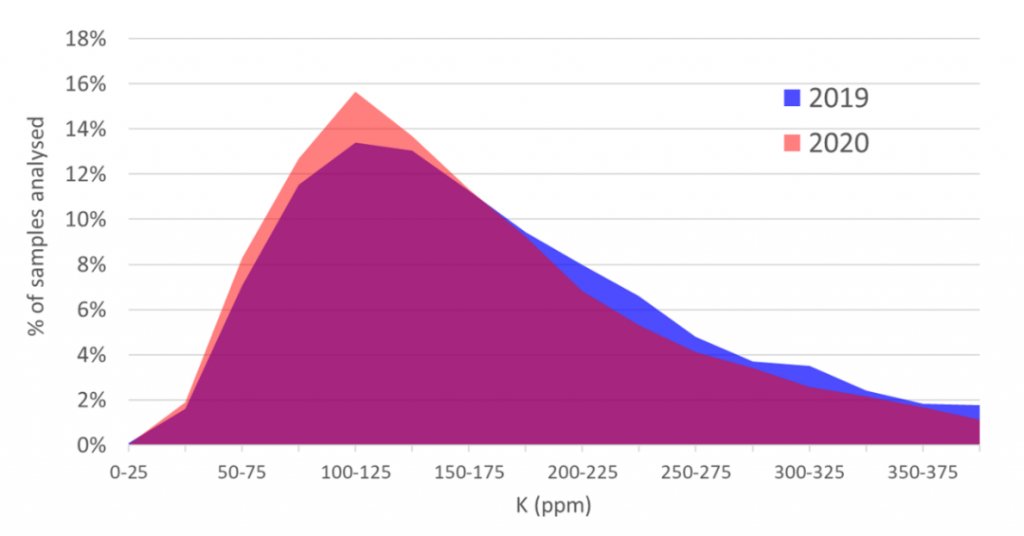Record rainfall impacts soil nutrient levels
July 2020
It will probably come as no surprise that the high level of rainfall seen over winter throughout most parts of the UK has resulted in lower soil nutrient levels when analysed. This was particularly evident in the soil mineral nitrogen samples taken at the end of the winter, which is to be expected due to the mobile nature of nitrate.
The mobility of a nutrient within the soil is closely related to the chemical properties of the soil, such as Cation Exchange Capacity (CEC), as well as the soil conditions, such as moisture. When there is sufficient soil moisture for leaching to occur, dissolved nutrients can be carried away with the water in drainage and lost from the soil profile. Nutrients that are leached more readily are usually those that are less strongly held in the soil on clay particles or organic matter. In general, anions (borate, sulphate, nitrate) leach more easily than cations (Potassium, Magnesium, Calcium), although phosphate is an exception to this.
Example comparison of nutrient mobility in soils
Very Mobile |
Mobile | Slightly Mobile | Immobile |
| Boron | Nitrogen (Nitrate) Sulphur Manganese Chlorine |
Potassium Calcium Molybdenum Cobalt Nickel |
Nitrogen (Ammonium) Phosphorus Magnesium Copper Iron Zinc |
Samples recorded by Lancrop Laboratories for 2020 show some significant differences in both soil and tissue K levels across both arable and grassland compared with 2019. Although the results of each year do not compare individual fields, they do show the trends the season over several thousand sample points.
Soil K levels 2019 v 2020

These results show a clear shift from the higher indices in 2019 (2+ and above), to the lower indices in 2020, with an increase of over 6% at or below the target of 2- in 2020 compared with the previous year.
Potassium (a monovalent cation) will leach more readily than magnesium (a divalent cation) since magnesium is more strongly held to the soil particles than potassium. This was seen this year, as there was not such a big shift in the magnesium index recorded as there was for potassium.
The results also highlight that a third of soils continue to be analysed below the target index for potassium; where yield and quality penalties can be expected. With such extreme conditions during the year, swinging from too wet to too dry in a short timeframe, these deficits in nutrient levels are even more likely to be exposed.
Whilst it is a requirement of the Farming Rules for Water to have a soil test that is no more than 5 years old at the time of making a fertiliser or manure application; it is also good agricultural practice and the key starting point for planning fertiliser applications.

